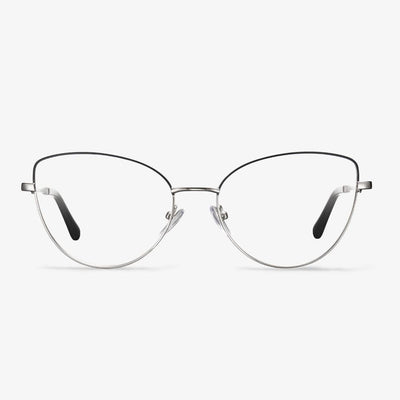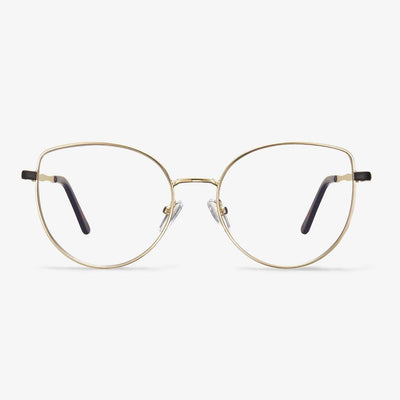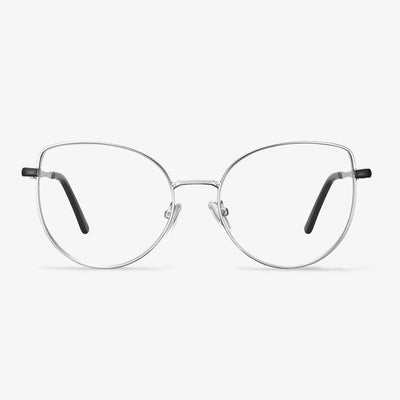The benefits of bifocal glasses
People with myopia often need to wear bifocal glasses after the appearance of presbyopia. The upper and lower parts of the lens have different diopters. The upper part is used to see distant objects, and the lower part is used to read and do close work. In addition to presbyopia, some people who work long hours in close quarters need bifocals to reduce eye strain. Studies have shown that long-term nearsightedness is the main cause of myopia. According to the adjustment principle of the eyeball and the height of the patient diopter, a reasonable measure is to wear myopia glasses with full correction when seeing the blackboard in class. When reading and writing. they should take off glasses or wear low myopia glasses. But the practice of continuously removing and putting on or changing glasses is clearly unrealistic. Bifocal glasses will solve this problem.
The birth of progressive lenses
In 1907, British optometrist Owen Aves first proposed the concept of progressive lenses and got the first patent of progressive lenses. In 1910, Henry Orford Gowlland designed and made a similar lens in Canada, but technical limitations prevented it from succeeding. In 1959, Bernard Maitenaz, a French optical and mechanical engineer, developed the first progressive lens, which was successfully put into the commercial market for the first time and became a milestone in the history of world optometry. With the development of science and technology, the design of progressive lenses has been greatly developed.
Polycarbonate vs Trivex Lens: Which One Is Better?
We have introduced what the polycarbonate lens and Trivex lens are. What are the differences between the polycarbonate lens and the Trivex lens? So, in this section, we will show you the differences between these two lens materials.
- Thickness:Polycarbonate glasses are about 10% thinner than Trivex lenses.
- Weight:Polycarbonate glasses are around 10% heavier than the Trivex lens.
- Optics - central:Trivex lenses have less internal stress and may produce sharper central vision than polycarbonate lenses.
- Optics - peripheral:Trivex lenses have a higher Abbe value so they can produce sharper peripheral vision with less chromatic aberration than polycarbonate lenses.
- Impact resistance:Polycarbonate and Trivex lenses have comparable impact resistance.
- UV protection:Both polycarbonate and Trivex lenses can block 100 percent of the sun’s harmful UV rays and provide protection for your eyes.
- Availability:Polycarbonate lenses have a wider variety of lens designs than Trivex lenses.
- Cost:Trivex lenses are expensive than polycarbonate lenses.
As for Trivex vs polycarbonate, you may have known some information from the above part. You can choose either lens material based on your like when purchasing the glasses.
The Cons of Transition Lenses
However, besides the pros of transition lenses, there are also some negative voices of transition lenses.
The transition lenses are not effective in cars because the windshield blocks the UV rays so that transition lenses won’t darken very well in the car.
Different brands of photochromic glasses have different levels of darkness and different reaction times. So, you may need to ask the doctor to find the brand that works best for you. Transition glasses are affected by colder weather. So it means that it may take a bit longer to react to UV rays in winter. Most transition lenses are not polarized which may result in harsh glares.
So, if you need transition glasses, try Koalaeye Optical, which provides the Koalaeye photochromic glasses. Besides these, Koalaeye Optical also provides other kinds of glasses, such as blue light blocking glasses, polarized sunglasses, progressive sunglasses, and so on.
What Are Bifocal Glasses?
Bifocal lenses are divided into two parts to accommodate two different prescriptions in one lens. One area of the lens will have one prescription (usually distance) and a segment in the lower half will have the other (usually near vision).
Bifocal glasses are most used to correct presbyopia - an age-related eye condition where the eyes begin to struggle to focus on anything up close. This difficulty usually results in people requiring glasses with two different prescriptions, one for short and one for long-distance.
On bifocal glasses, there is a distinct line between the different prescriptions. Wearers have to look up and down to switch between the prescriptions they need, with long-distance prescriptions at the top and near vision at the bottom.
Other features of high-quality titanium frame glasses
They are clear, with shiny surfaces, no scratches, corrosion, and other problems of the temple. The regular manufacturer prints the article number, size, etc. on the glasses frame. Open and make the temples flat, to see if it is tilted at an angle between the glasses body and temples, and to see that if the frames have the same size if the parts of the frame are symmetrical, etc.
EyeBuyDirect Jungle
Wooden frames are becoming more and more popular. As a material, wood is lighter, and it provides warmth, both in appearance and on the skin. These frames stand out in a relaxed, natural way. They have dark stripes, black temple tips, and spring hinges.


















































